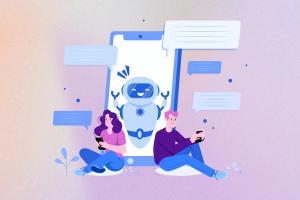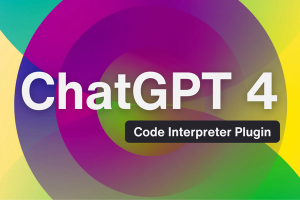Understanding the 5 Types of Chatbots
Updated May 27, 2024
Published June 12, 2023

Introduction
Chatbots, ever-present digital aids, have likely crossed your path without you noticing. Different types of chatbots have seamlessly integrated into our lives, offering assistance in fields like customer service, personal finance, and healthcare. What might surprise you is the wide array of chatbot types, each featuring unique abilities and purposes.
This article aims to guide you through the diverse types of chatbots and how to make your choice. Let’s get started!
The Evolution of Chatbots
The evolution of chatbots is indeed fascinating. Back in the day, chatbots were mere rule-based systems responding with pre-defined outputs to particular inputs. Picture them as digital parrots, parroting back pre-programmed phrases without grasping the conversation’s essence.
However, with technological advancements, notably in AI and machine learning, chatbots have transformed. No longer shackled by rigid rule sets, today’s chatbots can comprehend natural language, learn from user interactions, and anticipate user requirements.
Fast-forward to today, we find many types of chatbots, each apt for different tasks and sectors. From menu-guided bots aiding users with preset options to AI-driven bots capable of intricate dialogues, the chatbot universe is as varied as it is captivating.
Next, we’ll scrutinize these diverse types of chatbots, their functioning, and their strengths.
Understanding the 5 Types of Chatbots
In our exploration of chatbots, it’s important to recognize the diversity in their forms, each bringing its unique strengths, limitations, and technology. Let’s dive into each type:
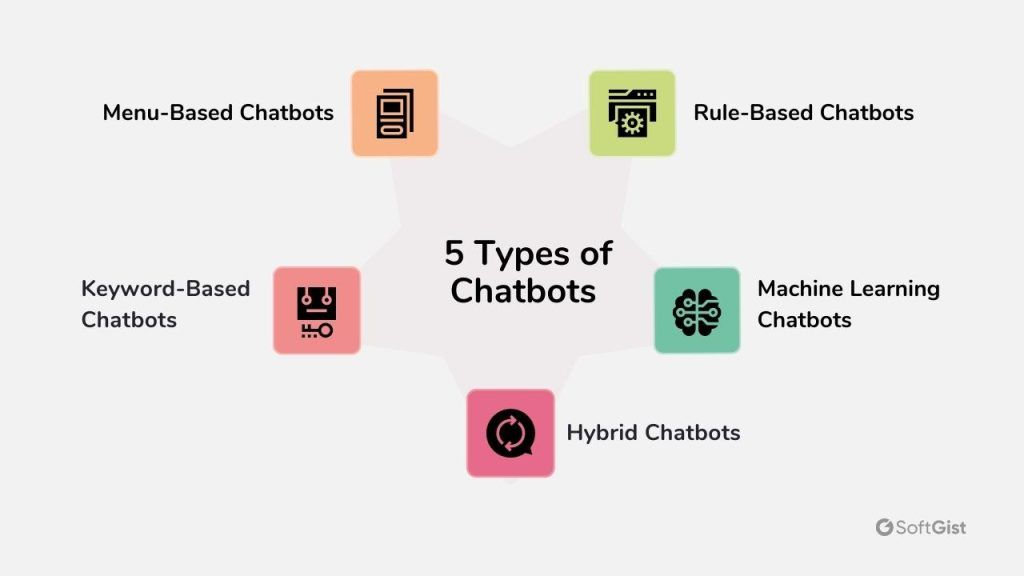
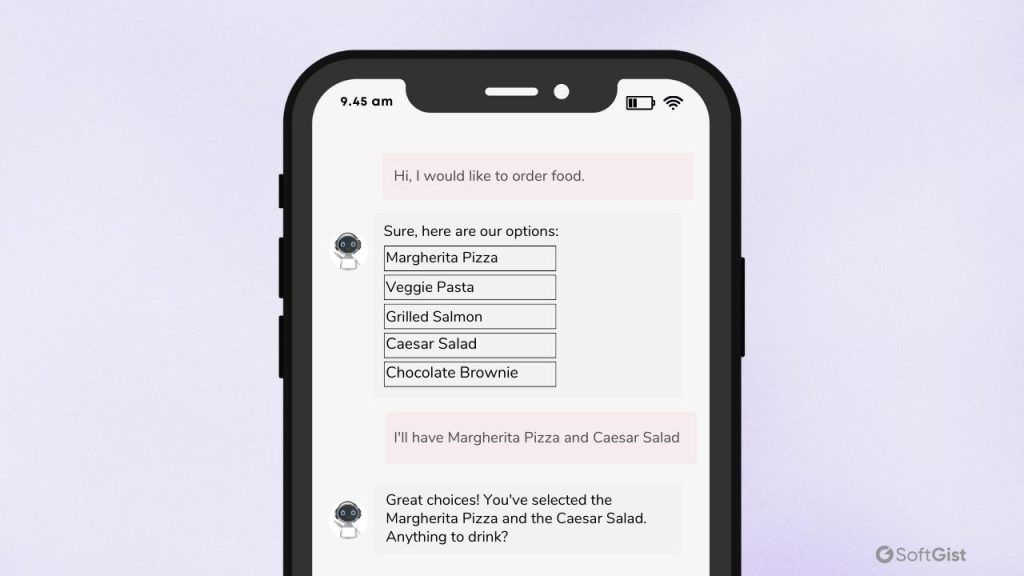
Menu-based chatbots are like digital menus. Menu-based chatbots provide users with options to choose from. They’re simple to use, making them perfect for straightforward tasks.
Under the hood, these types of chatbots are built using basic scripting languages and operate on a decision tree model. However, their simplicity can be a double-edged sword: they can only respond to particular inputs and are unable to process queries outside their programmed options. For instance, a menu-based chatbot on a pizza delivery app might help you select your toppings, but wouldn’t provide nutritional information.
2. Rule-Based Chatbots
Rule-based chatbots are a bit more sophisticated. They can understand a wider range of inputs by following a set of predefined rules and pathways.
These types of chatbots are typically built using more advanced scripting languages and basic AI principles. Rule-based chatbots, like their menu-based counterparts, can’t learn from user interactions or handle unprogrammed queries. Imagine a customer service chatbot, which could guide you through troubleshooting steps but couldn’t assist with a unique issue that’s not in its rule set.
3. Keyword-Based Chatbots
Keyword-based chatbots take it a step further. Keyword-based chatbots understand and react to user inputs by identifying specific keywords or phrases.
These types of chatbots leverage natural language processing (NLP) techniques to analyze user inputs. However, they might stumble on complex queries or ambiguous language since they rely on keyword matching rather than context comprehension. For example, a travel booking chatbot might understand phrases like “book a flight to New York,” but it might get confused if you ask it to “find the cheapest red-eye to the Big Apple.”
4. Machine Learning Chatbots
Machine learning chatbots are the most advanced type. They use AI and machine learning algorithms to understand and respond to user queries, making them capable of handling complex interactions and learning from each one.
These types of chatbots, often built using advanced AI models like GPT-3, can generate more natural, context-aware responses. AI-powered chatbots need large volumes of data for effective training, and their responses can sometimes be unpredictable. For instance, a healthcare chatbot might provide customized health advice based on your symptoms, but could occasionally give an unexpected response in the face of a rare or complicated medical condition.
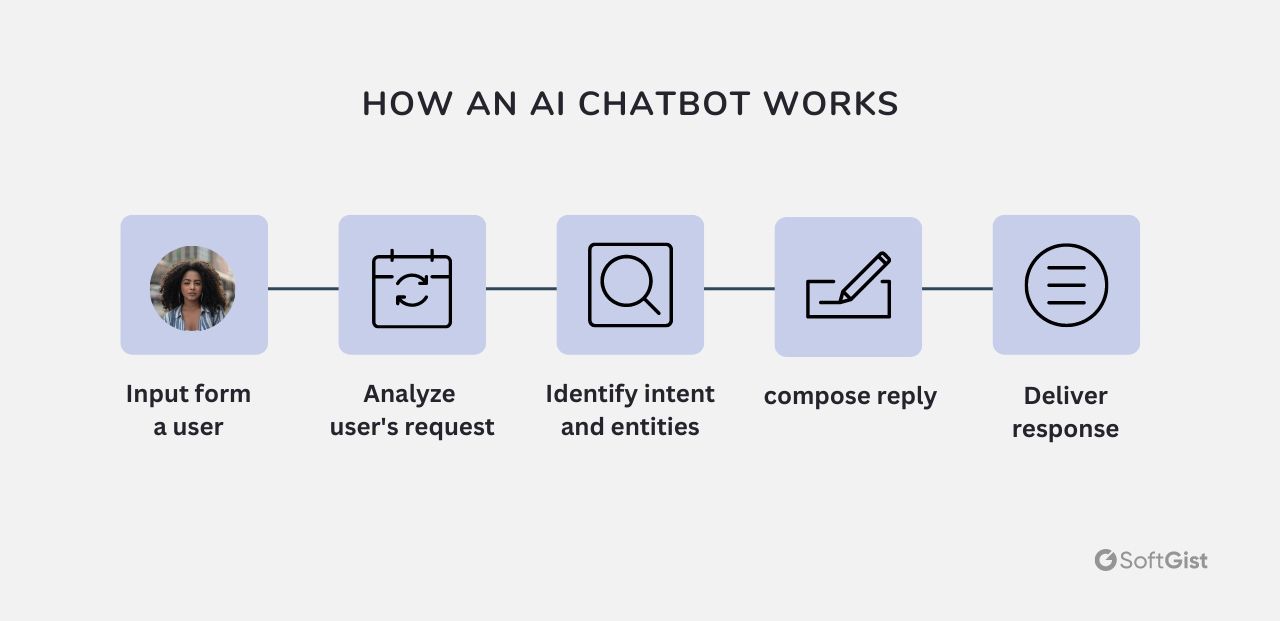
5. Hybrid Chatbots
Hybrid chatbots blend the features of other types of chatbots, making them the most versatile. They can handle a wide range of queries—from simple to complex—utilizing a combination of decision tree algorithms, rule-based logic, NLP, and machine learning. However, they require the most resources and expertise for effective implementation.
For instance, a virtual assistant like Siri or Alexa is a hybrid chatbot. It can perform simple tasks, answer questions, respond to specific commands, and learn from user interactions to improve over time.

Choosing the Right Chatbot for Your Needs
Picking the right chatbot for your business involves considering several crucial factors, including business needs and use cases, the chatbot’s comprehension and response capabilities, personalization potential, budget, backup plans, AI learning and analytics, deployment channels, and project support.
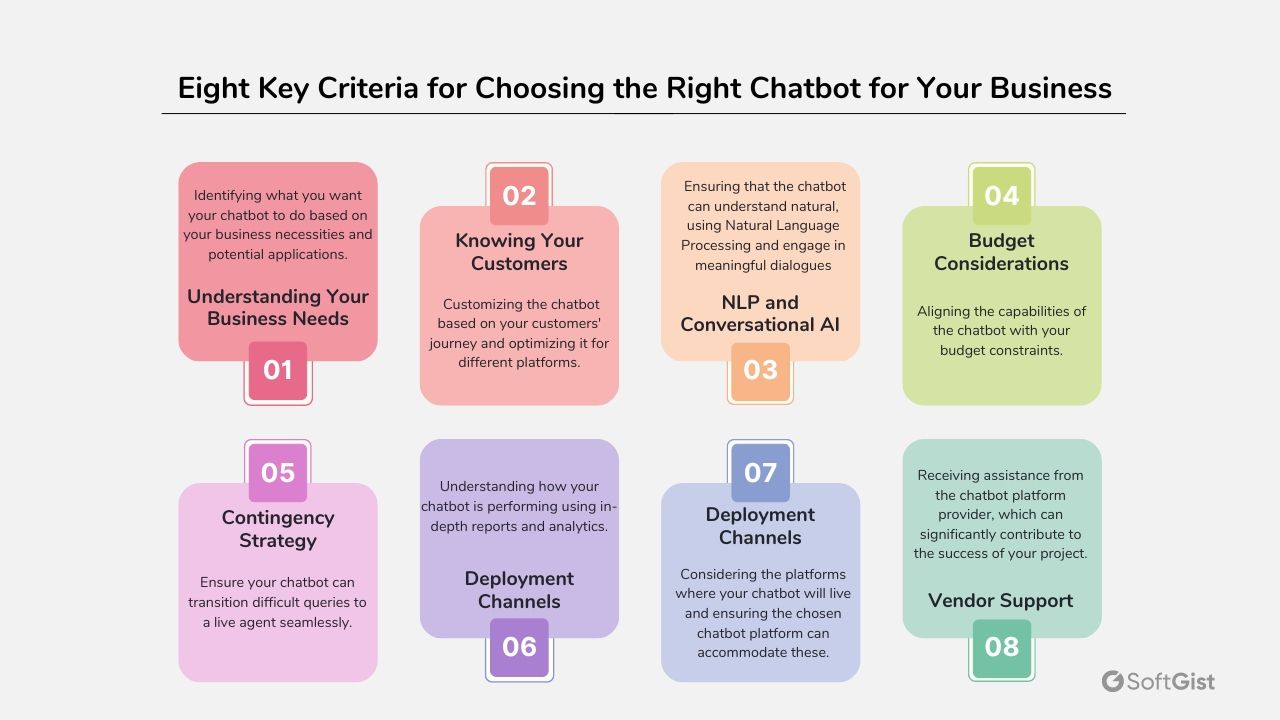
1. Understanding Your Business Needs
Before opting for a specific chatbot platform, understanding your business necessities and potential applications is key. It’s vital to understand what you want your chatbot to do. You might need one to handle numerous diverse requests, like a digital concierge, or perhaps a chatbot tailored to answer questions specific to your business, such as inventory or delivery status inquiries for an online furniture shop. You might also want your chatbot to integrate with various business systems for real-time data retrieval and personalized responses.
The applications you envision for your chatbot will greatly affect the kind of platform you choose. Therefore, invest the necessary time to pinpoint these needs and align them with the potential chatbot platforms. Remember, the objective isn’t mere response automation, but delivering value to your customers and your business.
2. Knowing Your Customers
Understanding your customers’ journey is crucial when choosing a chatbot. The chatbot should be customized based on the customer journey and optimized for different platforms. It should also know when to start interacting with customers.
For instance, if a customer is browsing your website without any difficulty, it’s best to leave them alone. It’s at the moment when a customer is grappling with finding what they need, that an adept chatbot can really prove its worth by stepping in and lending a helping hand.
Also, it’s important to underscore that chatbots shouldn’t be confined to a generic, one-size-fits-all approach. Different users and situations require a tailored response from these digital helpers. The answers they give could differ contingent on the specific user’s situation. Details like the user’s role, and geographical location, among other factors, could shape the response of the chatbot.
For instance, a question about “business class travel” might have different answers for a junior employee and a senior executive. The chatbot platform you choose should be capable of personalizing responses based on user profiles. If a platform lacks this capability, users may find the chatbot less helpful and engaging, which could impact its overall effectiveness and adoption.
3. NLP and Conversational AI
The heart of a chatbot lies in its ability to converse naturally. It hinges on two major aspects: Natural Language Processing (NLP) and Conversational AI.
NLP allows chatbots to interpret everyday language, catering to variances in phrasing and context. For instance, a customer may ask, “Where’s my stuff?” instead of using formal language like “What is my order’s status?”. An effective NLP chatbot should interpret both queries similarly.
Conversational AI empowers chatbots to engage in meaningful dialogues, rather than just providing straightforward answers. Imagine a user seeking restaurant recommendations. An ideal chatbot would ask follow-up questions like, “Italian or Mexican?” or “Downtown or suburbs?”, to provide personalized suggestions.
Lastly, a smart chatbot should avoid redundant queries. If a user has shared their location earlier, the chatbot shouldn’t ask for it again when recommending local services. Such attention to detail improves the user’s experience, enhancing your chatbots’ efficiency.
4. Budget Considerations
While it might be tempting to go for the most advanced types of chatbots powered by advanced AI, it’s important to align the chatbots’ capabilities with your budget constraints. You should prioritize features that enhance customer experience without driving them away.
Also, ensure that whatever chatbot you choose knows when to escalate the interaction to a live agent. This balance will ensure that you get the most value out of your investment in a chatbot.
5. Contingency Strategy
Even the most advanced chatbots can get confused or encounter situations they can’t handle. In such cases, it’s crucial that your chatbot platform can seamlessly hand off the conversation to a live agent.
This hand-off should ideally occur mid-conversation, allowing the agent to review the chat transcript and continue the conversation without making the user repeat their query. The ability to prompt a hand-off either as part of a conversation flow, in response to an error, or when the user requests it, is a key feature to look for in a chatbot platform.
6. AI Learning and Analytics
Understanding how your chatbot is performing is just as important as its initial setup. Look for platforms that offer in-depth reports and analytics. These will provide valuable insights into areas where your chatbot excels and where improvements are required.
An additional beneficial feature to look for is the ability for users to rate the chatbots’ responses. This user feedback can provide direct insights into what’s working well and what might need adjustment.
7. Deployment Channels
Chatbots can live on numerous platforms: web pages, chat apps like Slack or Microsoft Teams, mobile applications, browser extensions, and even voice assistants like Alexa or Google Assistant. Consider the channels that are most relevant to your customers and ensure the chatbot platform you select can accommodate them.
8. Vendor Support
No matter your level of AI expertise, having a supportive chatbot platform vendor can make a significant difference in your project’s success. This support can range from developer assistance, help with connecting and debugging APIs, or technical support for error messages.
Vendor support is not to be overlooked. The degree and nature of support provided by the chatbot platform should significantly influence your decision-making process.
Conclusion
Chatbots are reshaping business-customer interaction, paving the way for seamless, efficient, and personalized experiences. However, selecting the ideal chatbot requires understanding your business goals, customer journey, and the technological abilities of different types of chatbots.
Choosing a chatbot that best suits your requirements and adds substantial value to your enterprise is crucial. As chatbot technology continues to develop and change, keeping up-to-date with the latest innovations ensures your business stays at the cutting edge of this thrilling tech shift.
Share This Post
Della Yang
Della Yang is a marketing professional with a passion for the ever-changing digital landscape. She frequently writes tech news and reviews, sharing her knowledge and insights through blogs and various online platforms.
Allow cookies
This website uses cookies to enhance the user experience and for essential analytics purposes. By continuing to use the site, you agree to our use of cookies.



